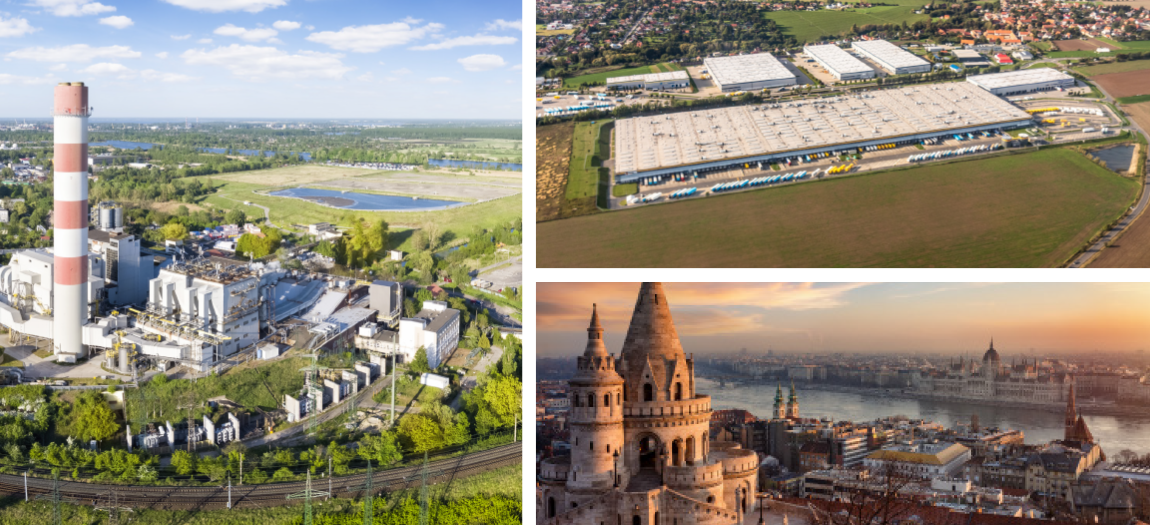
The industrial market in Central and Eastern Europe (CEE) has, in recent years, been characterized by significant regional differences, not only between countries within the CEE but also in comparison to Western Europe. While Volkswagen in Germany has already closed one of its factories in February, the automotive sector in the CEE is reporting positive results. In Czechia, total car production reached an all-time high in 2024. In Slovakia, manufacturers such as KIA, Stellantis, and Volkswagen are expanding their EV production. Despite the automotive sector's strong performance, Slovakia's industrial production remains under pressure. Although July 2024 saw a recovery, cumulative industrial output for the year 2024 saw a slight decrease y-o-y of 0.7%. Overall, industrial market conditions improve as you move east from Germany.
Differences among CEE countries are best illustrated by Poland's infrastructure investments. The Czech market needs to find new ways to compete with Poland, as many major tenders are won by Polish projects. Poland’s massive investments in infrastructure and lower rental prices are key reasons why Czechia struggles to compete with its northern neighbor. Although Czechia benefits from its strategic location, it has little else to offer compared to Polish rental prices, incentives, and infrastructure.
The industrial market in Czechia in 2024 experienced a continued boom in subleases and slight fluctuations in demand for logistics services. In some cases, B-class premises even compete with A-class premises from the perspective of logistics companies. However, this trend is not driven by price, but rather by the flexibility of leasing conditions. For more than two years, over 1 million square meters of industrial space has been under construction each quarter. Developers are continuing to prepare new projects across the country, with no sign of slowing down. A recent example is BMW’s lease of 123,000 square meters in the Moravia-Silesia region. The total size of projects under construction and in various stages of permitting is over 10 million square meters, making the potential of the Czech industrial market exceed 22 million square meters.
The current situation on the Slovak industrial market, particularly in the automotive sector, is dynamic, driven by key trends in electrification, production growth, and infrastructure modernization. However, analysts suggest that the automotive industry's growth may have been influenced by a low comparative base from the previous year. The long-term sustainability of this growth remains uncertain, especially as a slowdown in eurozone demand could pose challenges. Industrial construction is booming, with over 350k square meters under construction, primarily in Western Slovakia (particularly Bratislava and Trnava). The growing demand for industrial real estate in these regions reflects the rising importance of logistics and manufacturing hubs. However, the rapid pace of speculative construction has led to an increased vacancy rate. Slovakia has over 4.0 million square meters of planned projects, but with a high vacancy rate, further growth may be more moderate.

In Hungary, there has also been an increase in subleases, which appears to be a general trend across the CEE. The automotive industry remains the cornerstone of Hungary's industrial sector, with substantial investments from BMW, BYD, and Mercedes-Benz. These expansions are driving demand for industrial spaces, especially those suited for manufacturing and logistics. The sentiment in the industrial real estate market is highly optimistic. Hungary’s strategic location in Central Europe and its skilled labor force makes it a magnet for international investment. Both local and foreign investors are showing increasing interest in the market, driven by expectations of sustained growth. Confidence is bolstered not only by Hungary’s logistical advantages but also by ongoing government support through favorable policies and incentives, which are attracting major companies like LG-Magna, EVE Power, ZF, and CATL. Hungarian market growth can be further supported by over 3.0 million square meters of specified projects.
Meanwhile, the Romanian industrial real estate market continues to demonstrate resilience and steady growth, despite a slowdown in development activity compared to previous years. A notable trend is the reduction in speculative developments, with developers focusing more on pre-leased spaces or build-to-suit projects. The low vacancy rate reflects strong demand for industrial spaces. Despite this demand, rental rates remain highly competitive compared to other CEE countries, making Romania an attractive destination for industrial tenants and investors. Romania's untapped potential lies in brownfield sites without concrete plans. However, an additional 3.8 million square meters of new premises could be delivered within a few years.
ESG oriented certification, particularly BREEAM, and the overall quality and environmental sustainability associated with these certifications, are among the main trends today. A few years ago, “Very Good” certification was common, but now we increasingly see higher tiers such as “Excellent” or even “Outstanding.” There is also a rise in brownfield regeneration, making industrial development increasingly environmentally friendly. In contrast, we observe a growing demand for maximum flexibility in contracts, which is at odds with the rigid requirements of BREEAM-certified buildings on regenerated brownfields. If demand for such projects continues and the automotive sector maintains its growth, by 2030, Czechia, Slovakia, Hungary, and Romania could reach their full potential, collectively offering over 45 million square meters of premium industrial space for lease. This means that by 2030, these four countries could have a total stock comparable to Poland, which is very active in the commercial industrial real estate sector.